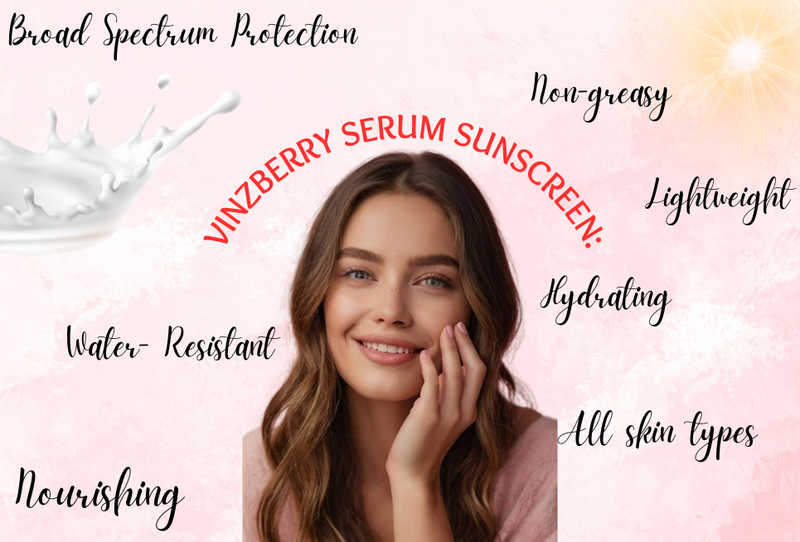

From college goers to an athlete, skin chafing is a common skin issue faced by many irrespective of age and type of work they do. Skin chafing majorly occurs when there is persistent contact between skin surfaces, which causes inflammation, irritation, redness and even severe blisters.
Chafing is not only painful but it can also adversely affect your daily lifestyle due to the uneasiness caused by it, thus affecting your overall wellbeing. In this blog, we'll explore more about skin chaffing, its causes, prevention measures and much more. Keep on scrolling below to learn about chafing in skincare.
What Is Chafing In Skincare?
Skin chafing is an issue which majorly occurs due to friction caused by constant rubbing of skin. Skin chafing can occur in any part of your body such as thighs, feet, groins, underarms, nipples, etc. It can happen to everyone, but people who wear tight clothes, are overweight, and perform prolonged exercises are more prone to chafing.
Check out some of the prominent causes of skin chafing below.
What Causes Chafing?
Having learned about chafing in skincare, it’s time to look into the various reasons that play a major role in skin chafing.
-
Excessive Sweating
Excessive sweating is one of the major culprits behind skin chafing. Sweat that builds up on the skin's surface damages the skin's natural defences and causes friction. Particularly, dried sweat can deposit a film of salt on the skin, aggravating discomfort brought on by friction.
-
Bad Clothing Choice
Wearing tight or ill-fitting clothes is also one of the major reasons behind skin chafing. Your inappropriate clothing choices may make your garments rub incessantly against your skin, causing redness and inflammation. Furthermore, wearing garments made of impermeable fabrics might trap sweat, aggravating the problem.
-
Frequent Change In Weight
Skin chafing may result from changes in body weight. Rapid weight gain or loss might cause areas of friction between folds and creases because the skin may not have enough time to adapt to the changed shape of the body. The inner thighs, underarms, and abdomen are typical areas where skin chaffing occurs due to frequent weight loss or gain.
-
Strenuous Physical Activities
Chafing can happen if you engage in strenuous physical activity without the right safety measures or lubrication. Due to the repetitive motions required by their sports, long-distance runners, cyclists, and hikers are particularly at risk. The risk of chafing is increased by the constant movement and heat produced, which leads to friction and wetness.
-
Lack Of Lubrication
Not applying proper lubrication on the areas prone to skin chafing may further aggravate the problem. Lubrication acts as a barrier between the skin surfaces and minimises friction and the risk of discomfort.
-
Diaper Rashes
As mentioned earlier, skin chafing can occur irrespective of age group, hence, babies do face irritation brought on by skin chafing. The issue generally occurs when a newborn is exposed to the wetness of faeces and urine for extended periods. This is often known as diaper rash or diaper dermatitis.
-
Humid Climate
Hot and humid weather may also make your skin prone to chafing. At humid places, excessive sweating can weaken the skin and drain its natural oils, putting it at greater risk of rubbing. Chafing is made more likely by the heat and moisture together, thus prevention is essential if you live in a hot and humid climate.
5 Tips To Prevent Chafing
Here are some of the preventive measures that can help prevent chafing:
-
Select Appropriate Clothing
Selecting appropriate clothing that is lightweight and has moisture-wicking qualities can help you deal with skin chafing. Clothes made of cotton are considered best as they keep moisture at bay by absorbing the sweat. Wearing clothes that fit loosely can lessen friction and any seams, tags, or embellishments that might rub against your skin. Cotton clothes keep you dry throughout the day, especially when you're exercising.
-
Drink Plenty Of Water
It's very crucial to stay hydrated to prevent issues caused by skin chafing. Dehydration increases the amount of salt in perspiration, which can irritate the skin more and increase friction. Your skin will feel softer and more elastic as you consume more water and hence will recover from chafing quickly. The only real defence against chafing is drinking water.
-
Invest In Good Anti-Chafing Products
Along with drinking plenty of water and wearing loose-fitting clothes, it’s important to lubricate your skin with quality anti-chafing products. You can get your hands on Anti-chafing cream from VinzBerry which is infused with the richness of Vitamin C and Ferulic Acid. The cream not only soothes the rashes but its unique gel formulation feels non-greasy and light on your skin. Free from harsh chemicals such as parabens, sulphates, SLS and SLES the cream is especially curated for athletes and gym enthusiasts.
-
Regular Diaper Change
In the case of babies, you can prevent chafing by applying enough oil or talcum powder before making them wear diapers. To prevent a buildup of moisture and heat, it is also advised to regularly change diapers.
-
Stay Dry
Staying dry is the key to preventing chafing as it may get worse on wet skin. The parts that sweat the most should be well-lubricated with anti-chafing products and in case of excessive sweating, you must consider changing your clothes at regular intervals.
Although skin chafing is a common condition being aware of its numerous root causes will enable you to take preventative measures to lessen itching. Paying attention to your clothing selections, being hydrated, and using the right lubricants like the one from VinzBerry may make a world of difference whether you're an athlete, an outdoor enthusiast, or simply someone prone to chafing.
VinzBerry brings you a range of intimate hygiene products and personal care products that make your everyday life better such as intimate washes, footcare cream, neck and back de-pigmentation cream and so much more.
Even after taking all the preventive measures, if the chafed area turns bright red, hurts, feels warm to the touch, or begins to swell, it is always advised to consult a medical expert. These indications of infection may necessitate the use of antibiotics or other therapies to stop the problem from getting worse or from affecting other areas of your body.
Frequently Asked Questions On Chafing Skincare
Q. What is the best cream for chafing?
A: You can opt for an anti-chaffing cream from VinzBerry. It is free from harsh chemicals and is infused with rich ingredients such as Vitamin C and ferulic acid that work wonders on all skin types.
Q. What is the fastest way to heal chafing?
A: One of the fastest ways to heal chafing is by staying hydrated, wearing loose clothes and using the right set of anti-chafing products.
Q. How do you prevent chafing skin?
A: Chafing skin can be best prevented by wearing loose-fitting clothes, drinking plenty of water, staying dry and using quality lubricants.
Q. Is chafing a fungal infection?
A: Chafing is not a serious problem in itself but if it persists for long it may develop bacteria leading to fungal infection.
Q. How long does chafing take to heal?
A: Chafing does not heal overnight, however, if you take preventive measures it can take a few days to heal skin chafing.
Q. Does chafing cause dark skin?
A: Prolonged skin chafing may cause skin to become dry, irritated and discoloured.












